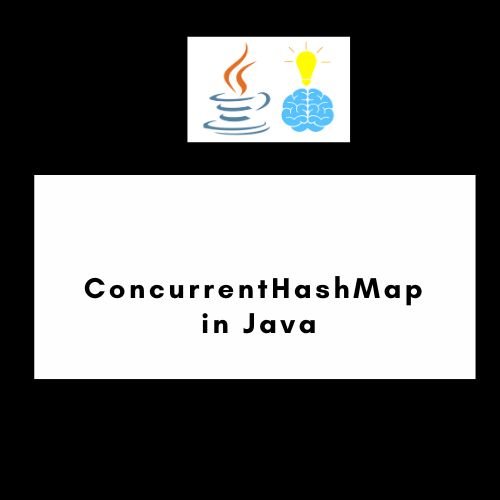ConcurrentHashMap in Java is a thread-safe variant of the traditional HashMap data structure, designed to support concurrent access from multiple threads.
Key features and aspects of ConcurrentHashMap in java
Here are some key features and aspects of ConcurrentHashMap in Java:
- Thread-Safety:
ConcurrentHashMapis designed to allow multiple threads to access and modify the map concurrently without external synchronization. This is achieved through mechanisms like fine-grained locks and other concurrency strategies. - Performance: By dividing the map into segments,
ConcurrentHashMapcan achieve better parallelism compared to a single lock approach. This results in improved performance for concurrent read and write operations. - Read Operations: Multiple threads can read from different segments simultaneously without any locking. This enhances concurrency for read-heavy workloads.
- Write Operations: Write operations, such as adding, updating, or removing elements, are managed using fine-grained locks on individual segments. This minimizes the impact of contention during concurrent writes.
- Null Values and Keys: Both null keys and null values are supported in
ConcurrentHashMap. - Iterators:
ConcurrentHashMapiterators provide a snapshot of the map’s state at the time of creation. They do not throwConcurrentModificationException, which is commonly encountered in regularHashMapiterators. - Atomic Operations:
ConcurrentHashMapprovides atomic methods likeputIfAbsent,replace, andremovethat allow you to perform these operations atomically. - Scalability: The segmented architecture of
ConcurrentHashMapenables it to scale with the number of available processor cores, making it suitable for applications with high concurrency requirements.

Sample Code for using ConcurrentHashMap in Java
Here’s a very simple code for using ConcurrentHashMap in Java.
import java.util.concurrent.ConcurrentHashMap;
public class ConcurrentHashMapExample {
public static void main(String[] args) {
ConcurrentHashMap<String, Integer> concurrentMap = new ConcurrentHashMap<>();
concurrentMap.put("One", 1);
concurrentMap.put("Two", 2);
concurrentMap.put("Three", 3);
// Perform operations safely in a concurrent environment
int value = concurrentMap.getOrDefault("Two", 0);
System.out.println("Value for 'Two': " + value);
int result = concurrentMap.compute("Three", (key, oldValue) -> oldValue * 10);
System.out.println("Updated value for 'Three': " + result);
}
}
Output
Value for 'Two': 2
Updated value for 'Three': 30HashMap vs ConcurrentHashMap in Java
Here’s a comparison between HashMap and ConcurrentHashMap in Java:
| Aspect | HashMap | ConcurrentHashMap |
|---|---|---|
| Thread Safety | Not thread-safe. Concurrent access requires external synchronization mechanisms. | Thread-safe. Designed for concurrent access without external synchronization. |
| Concurrency Level | Single-threaded access. | Multiple threads can access concurrently. |
| Performance | High performance for single-threaded scenarios. | Optimized for read-heavy and concurrent access. |
| Segmentation | No segmentation. Not suitable for high concurrency. | Segmented architecture with locks for segments, suitable for high concurrency. |
| Read Operations | Multiple threads can read concurrently without synchronization. | Multiple threads can read concurrently without locking. |
| Write Operations | Not safe for concurrent write operations. Requires external synchronization. | Supports concurrent write operations with minimal contention. |
| Iterators | Fail-fast iterators. Changes during iteration may result in ConcurrentModificationException. | Weakly consistent iterators. Changes during iteration don’t throw exceptions. |
| Null Keys and Values | Supports null keys and values. | Supports null keys and values. |
| Performance Overhead | Lower overhead due to lack of synchronization. | Slightly higher overhead due to synchronization mechanisms. |
| Usage Complexity | Simpler usage in single-threaded scenarios. | Requires understanding of concurrency and usage patterns. |
| Use Cases | Suitable for scenarios with no concurrent access. | Ideal for scenarios with high concurrency, parallel processing, and caching. |
Keep in mind that the choice between HashMap and ConcurrentHashMap depends on your application’s requirements. If you have single-threaded scenarios or are willing to manage synchronization externally, HashMap might be sufficient. On the other hand, for multi-threaded scenarios or high-concurrency environments, ConcurrentHashMap provides thread safety and optimized performance.
When to use ConcurrentHashMap in Java
ConcurrentHashMap in Java is specifically designed for scenarios where you need to manage and manipulate data concurrently in a multi-threaded environment. Here are some situations in which using ConcurrentHashMap is beneficial:
- High-Concurrency Applications: When your application has multiple threads concurrently accessing, updating, or modifying the same data,
ConcurrentHashMapensures thread safety without the need for external synchronization. - Read-Heavy Workloads: If your application involves more read operations than write operations,
ConcurrentHashMapprovides efficient concurrency for read access. Multiple threads can read from different segments concurrently without locks, improving performance. - Caching: When implementing a cache or a cache-like mechanism,
ConcurrentHashMapcan be useful. It provides the ability to store and retrieve cached data safely from multiple threads. - Parallel Processing: In applications that require parallel processing, such as data processing pipelines or parallel algorithms,
ConcurrentHashMapallows different threads to process data independently and concurrently. - Reducing Contention: In scenarios where a single global lock would introduce contention and degrade performance,
ConcurrentHashMap‘s segmented architecture minimizes contention by allowing multiple threads to access different segments concurrently. - Real-Time Systems: For real-time systems where responsiveness is critical,
ConcurrentHashMapcan help maintain performance by enabling multiple threads to process and update data without significant delays. - Multi-Threading with High Performance: If you’re building multi-threaded applications that require both high performance and safety,
ConcurrentHashMapoffers an efficient balance between concurrency and synchronization. - Dynamic Environments: In applications where the number of threads may change dynamically or where thread interactions are complex,
ConcurrentHashMapprovides a way to manage concurrent data access more easily. - APIs and Libraries: If you’re building APIs or libraries meant to be used in multi-threaded environments,
ConcurrentHashMapcan ensure that your data structures are thread-safe for users of your code. - Simplified Synchronization: Using
ConcurrentHashMapcan simplify your code by reducing the need for explicit synchronization mechanisms. This can lead to cleaner and more maintainable code.
Conclusion: ConcurrentHashMap in Java
ConcurrentHashMap in Java is a strong solution designed for multi-threaded situations where simultaneous data access and manipulation are critical. It overcomes concurrency’s problems by providing a segmented design that enables efficient and safe concurrent operations.
